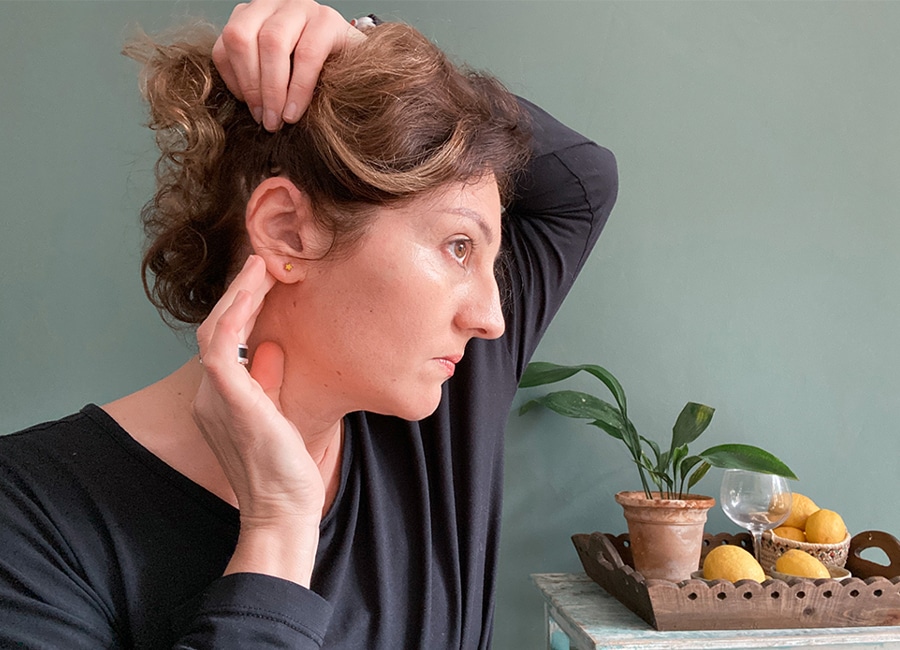
Scalp feeling itchy, but you don’t know why? It could be lice! If you have school-aged children, know of a recent infestation, or just have that ‘itch,’ you may want to check yourself for lice. Understanding when and how to check for head lice is essential for early detection and effective management. It can also prevent further spread throughout your household. If you think you may have lice, follow our easy guide to check and treat yourself!
When to Check for Head Lice
A child with lice doesn’t necessarily mean you have it, or all family members also have it. However, there are certain situations when it’s prudent to perform a head lice check:
When a Household Member Has Lice
If one person in your home has lice, it’s crucial to check everyone else to prevent spreading. Lice spread quickly through direct contact and shared items, so ensuring everyone in the household is lice-free helps contain the infestation.
After an Outbreak
If there’s a lice outbreak at your child’s school or daycare, you should check your child and yourself regularly. Outbreaks can spread rapidly in group settings, so staying vigilant helps you catch and treat lice early.
After Visiting a Lice-Infested Home
If you’ve spent time in another home with lice, conducting a lice examination is advisable.
Persistent Itching
If you or your child experience persistent scalp itching, it’s a good idea to check for lice. Itching is a common symptom of lice bites, caused by an allergic reaction to lice saliva.
How to Check Yourself for Head Lice
As unpleasant as the experience can be, having someone help you check your head is ideal. The best method is asking a family member, friend, or physician to check your head. However, this may not be an option for some people, such as single parents or people living alone. Here’s how you can check yourself effectively:
Using Mirrors
Begin by setting up two mirrors facing each other to get a full view of your scalp. Head lice like to stay where it is warm, so focus on areas behind your ears and the nape of your neck. Look for any lice crawling in these areas or possible nits (eggs) attached to the strands of hair. Nits are tiny, oval-shaped, and usually yellow to white. If you have dark hair, it may be harder to see the lice as they become darker in color after feeding.
Separating Hair
Use a comb to part your hair and check for any particles near the root. It is common to mistake dandruff for nits, so try pulling on the particle to see if it dislodges easily. Nits are attached with a protein that acts like glue, so if it slides off easily, it is more likely to be dandruff.
Using a Lice Comb
A lice comb can be a valuable tool for detecting lice. Purchase a fine-tooth nit comb, like the NitDuo, and comb through small sections of your hair, pulling the comb from root to tip. If the comb is difficult to get through the hair, apply conditioner or detangler first. After each pass, check the teeth of the comb for nits or lice.
What to Do If You Find Lice
Discovering lice or nits during a check requires prompt action to prevent them from spreading further. The Licefreee Kit offers a comprehensive solution to eliminate lice and nits effectively, providing your family with peace of mind. This kit safely and effectively eliminates lice and nits, even super lice, thanks to its non-toxic, chemical-pesticide-free formula.
Begin by using the Licefreee! Gel to kill lice and nits on contact. This treatment is safe for use on children as young as six months. The kit also includes Licefreee Everyday Shampoo, a daily-use lice shampoo that should replace your regular shampoo to help avoid reinfestation. The included root applicator ensures easy and targeted application of the gel directly to the scalp, and the professional nit comb helps effectively remove dead lice and nits.
After treating the lice on the scalp, it’s essential to clean your environment thoroughly to prevent reinfestation. Wash all bedding, clothing, and any items that may have come into contact with lice in hot water. Vacuum your home thoroughly, focusing on areas where infested individuals have been, to remove any stray lice or nits. This step ensures that any remaining lice or nits in the environment are eradicated, helping to maintain a lice-free home.
What If You Don’t Find Lice?
If you don’t find lice in your hair, it could be that you have dandruff or another issue with your scalp. In this case, consult a physician for a proper diagnosis and recommended treatment.
Regular head lice checks are an essential part of managing and preventing infestations, especially in households with children or during outbreaks. By knowing when and how to check for lice effectively, you can ensure early detection and treatment.
